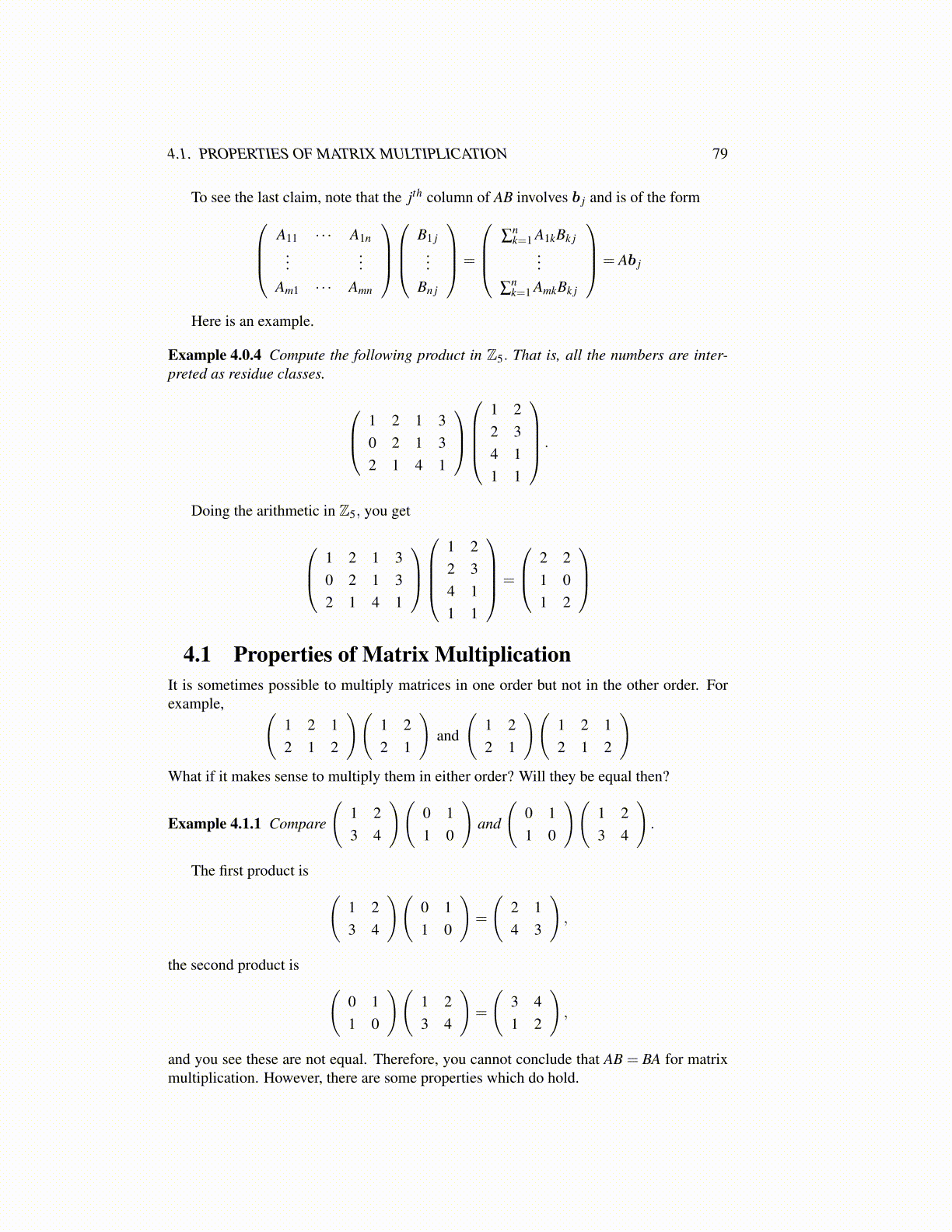
4.1. PROPERTIES OF MATRIX MULTIPLICATION 79
To see the last claim, note that the jth column of AB involves b j and is of the formA11 · · · A1n
......
Am1 · · · Amn
B1 j...
Bn j
=
∑
nk=1 A1kBk j
...
∑nk=1 AmkBk j
= Ab j
Here is an example.
Example 4.0.4 Compute the following product in Z5. That is, all the numbers are inter-preted as residue classes.
1 2 1 30 2 1 32 1 4 1
1 22 34 11 1
.
Doing the arithmetic in Z5, you get
1 2 1 30 2 1 32 1 4 1
1 22 34 11 1
=
2 21 01 2
4.1 Properties of Matrix MultiplicationIt is sometimes possible to multiply matrices in one order but not in the other order. Forexample, (
1 2 12 1 2
)(1 22 1
)and
(1 22 1
)(1 2 12 1 2
)What if it makes sense to multiply them in either order? Will they be equal then?
Example 4.1.1 Compare
(1 23 4
)(0 11 0
)and
(0 11 0
)(1 23 4
).
The first product is (1 23 4
)(0 11 0
)=
(2 14 3
),
the second product is (0 11 0
)(1 23 4
)=
(3 41 2
),
and you see these are not equal. Therefore, you cannot conclude that AB = BA for matrixmultiplication. However, there are some properties which do hold.